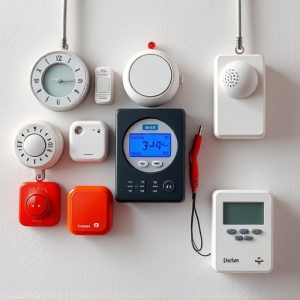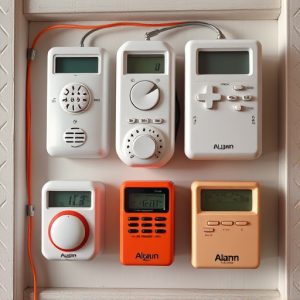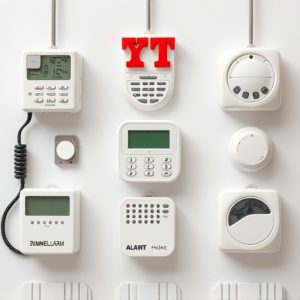Personal Alarms With Remote Control: Features, Safety, and Effective Use
Personal alarms with remote control offer compact yet powerful safety solutions for isolated or high…….
Personal alarms with remote control offer compact yet powerful safety solutions for isolated or high-risk situations, providing quick access to help through real-time tracking and immediate distress signal transmission to pre-programmed contacts or monitoring centers. Effective use requires understanding features like range and activation methods, proper placement of the remote control, and planning based on range limitations and potential obstructions to minimize false alarms, ensuring peace of mind for individuals with special needs, the elderly, or those working or traveling alone.
In today’s world, personal safety is paramount. One effective tool gaining traction is the body-worn panic alarm with remote monitoring capabilities. This technology offers individuals an extra layer of protection, providing peace of mind in various settings.
This article explores the features and benefits of these innovative Personal Alarms With Remote Control, delving into how remote monitoring enhances personal safety and guiding readers on effective implementation and use.
- Understanding Body-Worn Panic Alarms: Features and Benefits
- The Role of Remote Monitoring in Personal Safety
- Implementing and Using Personal Alarms With Remote Control Effectively
Understanding Body-Worn Panic Alarms: Features and Benefits
Body-worn panic alarms, also known as personal alarms with remote control, are compact devices designed to provide individuals with an extra layer of safety and peace of mind. These alarms offer a range of features tailored to suit various situations and needs. One of the key benefits is their portability; they can be easily worn on the body, whether clipped onto clothing or attached to a belt loop, ensuring accessibility in moments of distress.
The alarm systems typically include a small handheld device and a remote control. The handheld unit often has a simple interface with buttons to trigger the alarm, while the remote allows users to set off the alarm from a distance. This feature is particularly useful for those who may not be able to reach or activate the alarm manually during an emergency. With the push of a button, users can instantly notify others nearby or even emergency services, providing crucial response time. These alarms are ideal for individuals who frequently find themselves in isolated or high-risk environments, offering them the security to stay connected and protected.
The Role of Remote Monitoring in Personal Safety
In today’s digital era, personal safety has become a paramount concern for individuals across various demographics. One innovative solution that has gained significant traction is the use of body-worn panic alarms with remote monitoring capabilities. These devices transcend traditional alarm systems by offering real-time tracking and immediate assistance during emergencies. When activated, either manually or automatically through falling or impact sensors, these personal alarms send distress signals to pre-programmed emergency contacts or monitoring centers.
The integration of remote monitoring in personal safety enhances responsiveness and peace of mind. Trained professionals at monitoring stations can swiftly assess the situation, verify the alarm’s legitimacy, and coordinate appropriate help, whether it’s law enforcement, medical services, or local emergency responders. This immediate intervention can be crucial in mitigating risks and ensuring the well-being of individuals who may find themselves in vulnerable situations, such as those with special needs, the elderly, or individuals working or traveling alone.
Implementing and Using Personal Alarms With Remote Control Effectively
Implementing and using personal alarms with remote control effectively requires a strategic approach to ensure safety without causing undue alarm. These devices are designed for immediate, discreet assistance in various scenarios—from personal emergencies to outdoor activities. To maximize their utility, users should familiarize themselves with the alarm’s features, including its range, activation methods, and any customizable settings. Regular practice of triggering the alarm can help individuals become more comfortable and confident in using it when needed.
Placement is key; secure the remote control in easily accessible locations like pockets or belts to ensure quick reaction times. It’s also crucial to understand the range limitations and potential obstructions that might interfere with signal transmission, allowing users to plan ahead and take appropriate measures to maintain connectivity. By combining these practical steps with a clear understanding of their Personal Alarms With Remote Control, individuals can leverage this technology as a powerful tool for personal safety.
Body-worn panic alarms with remote monitoring offer a powerful tool for personal safety, providing individuals with an extra layer of security. By integrating these devices into daily life, users can quickly and discreetly summon help in emergencies. The effectiveness lies in the combination of the alarm’s physical response and remote monitoring systems, ensuring swift action and peace of mind. For those seeking enhanced personal protection, especially in challenging environments, Personal Alarms With Remote Control are a game-changer, revolutionizing how we perceive and manage safety.


